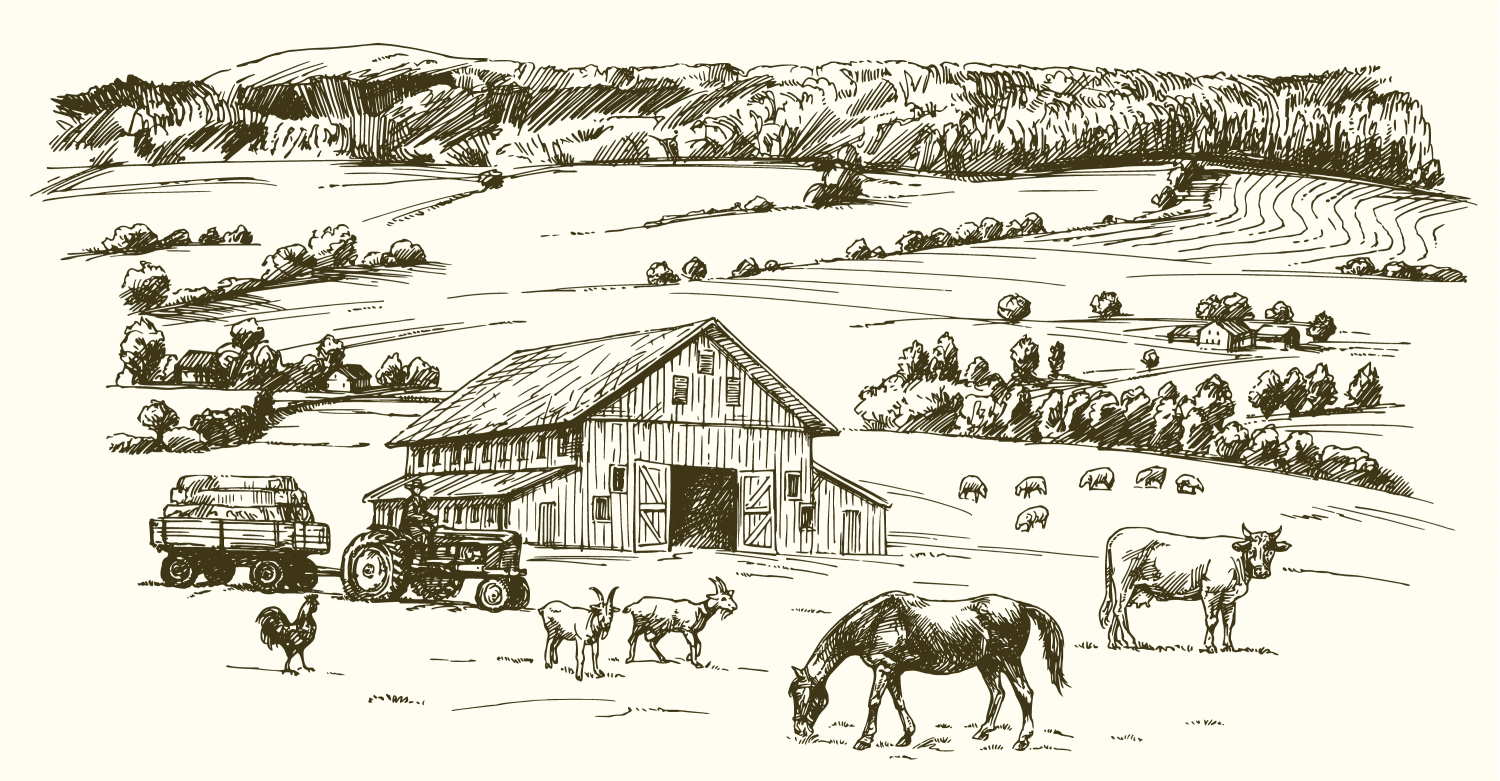
- Home
- Regenerative Agriculture
Regenerative Agriculture
Regenerative Agriculture is an agricultural approach that focuses on improving soil health, increasing biodiversity, and promoting natural processes. This type of agriculture is fundamentally different and really quite the opposite of conventional agriculture. Regenerative agriculture essentially tries to mimic the natural processes of earth in a way that provides us with food and resources while maintaining the health of the surrounding ecosystem.
Some of the biggest differences between conventional and regenerative agriculture include biodiversity, tilling practices, fertilizers, and pesticides. Generally speaking, conventional agriculture tills the land and uses synthetic fertilizers and pesticides to be able to grow one type of plant effectively. When only growing one type of plant, let’s say corn, it is necessary to use fertilizers and pesticides/fungicides. There is no place in nature that has exclusively one type of plant. That simply is not how the earth works. In order to have a healthy ecosystem, there needs to be a balance. There is no balance in a 1000 acre field full of nothing but corn plants spaced 12 inches from each other in tilled rows. This way of farming actually depletes the nutrients and damages the topsoil, leading to a need for synthetic fertilizers.

Regenerative agriculture can take many different approaches depending on the goal, but one commonality is a focus on soil health. Soil is the building block of our food production. Good soil not only yields good crops, but it prevents erosion, water runoff, and can sequester carbon. Tilling the soil is one of the worst practices in conventional farming that increases CO2 production and contributes to erosion and topsoil depletion. As such, this is usually the first aspect to change when farmers transition to more regenerative practices. Tilling is a practice that is not present in nature for good reason. If tilling was necessary for good plant growth, there would be some animal or plant that has adapted to disturb the soil in such a way, but there isn’t. Humans wouldn’t be able to do it without tools. The general idea of tilling, that the soil needs to be aerated, isn’t necessarily wrong. Aeration can be very helpful, but aeration and entirely digging up the topsoil are two very different things.
Biodiversity is an equally important aspect of regenerative agriculture. Nature is very diverse with different plants, animals, insects, and other organisms that work both together and counter-actively to balance the ecosystem. Of course, a farm growing food is going to look different than a grassland that is fostering wildlife, but the principle of biodiversity is important in either scenario. Different plants produce and release different nutrients that keep the microbes in the soil healthy, in turn keeping the soil healthy. Biodiversity in farming can take shape in many different ways. A good example though would be the “Three Sisters” Method. This is a companion planting technique that grows corn, beans, and squash in the same space. The corn grows vertically, the bean plants climb the corn while fixing nitrogen into the ground for the corn to use, and the squash covers the soil to keep it from sun damage. Together, these 3 plants also yield a great nutritional profile. Other companion planting techniques include planting marigolds to drive away pests or using plants that attract certain bugs as a pest trap. In instances where there is one crop in a large area, cover crops and crop rotation are important for rejuvenating the soil. Cover crops are grown to keep the soil covered from the sun and to replenish nutrients like nitrogen that have been depleted through the growing season.
In order to not use chemical fertilizers, regenerative farmers compost. Composting can take scraps and dead plant material, and turn that into nutrient rich soil to add as fertilizer. This often uses food scraps, leaves, wood, manure, and often worms (or other decomposers). This not only makes good fertilizer, but also reduces waste on farms. Some people even use their compost to make a “compost tea,” which is essentially a liquid extract from the compost that contains beneficial bacteria, nutrients, and other organisms to be added to soil and plants as fertilizer.
When it comes to livestock farming, grazing animals like cows can do a lot of good for the soil and are a great tool to sequester carbon. If we think back to when America had a Midwest full of lush grasslands, a driving force in preserving those ecosystems were herds of grazing animals like buffalo. These animals would be in tight herds, grazing an area as much as they could before moving more to avoid predators. This constant movement is something that is mimicked with regenerative agriculture. In agriculture, we call it rotational grazing. This allows for pasture animals like cows to graze a small area, leave their manure as fertilizer, and compact the soil. This introduces lots of organic matter into the soil in the form of compacted grasses/plants and manure. To take it a step further, some farmers will use chickens to control pests and spread the manure along the area, fertilizing more of the ground. Many farmers will also introduce cover crops like clover that fix nitrogen into the ground and provide a nutritious food source for the animals next time they graze that area. This whole process creates a very nutrient rich soil that will grow back its plants efficiently and sequester carbon. It also results in healthy livestock, as this would be the eating pattern of those animals in the wild.
There is a lot to regenerative agriculture that very much depends on location and goals, but this is the way to sustainable, in-ground, and natural food production. Good soil health is necessary for good food production, so it is clear that this type of agriculture will need to become more prominent. If you want to contribute to this movement, the best thing you can do is to grow your own food or source your food from more local small farms that use organic and regenerative farming practices. When it comes to meat, choose grass-fed. For chicken and eggs, choose pasture-raised whenever available. Use your money to support the types of practices that you want your farmers to use.
Thank you for reading and thank you for your support.
Please consider donating to Growing Us Home Below. As a 501(c)(3), your donations are Tax Deductible!

Know of a friend that may help Growing Us Home?
Send them this Shareable LINK
